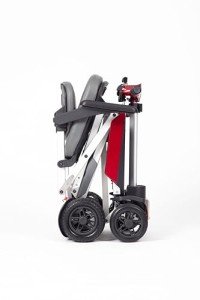Why Mobility Aids Is Fast Increasing To Be The Hottest Trend Of 2024?
Understanding Mobility Aids: Enhancing Independence and Quality of Life
As society continues to age and individuals significantly seek methods to maintain independence, the need for mobility aids has actually never been more important. Mobility aids, which encompass a series of devices developed to assist people with walking or moving, play a crucial function in promoting mobility, boosting security, and improving general quality of life. This post will explore the different kinds of mobility aids, their benefits, considerations for choice, and answer some frequently asked concerns.
Types of Mobility Aids
Various mobility aids are readily available, each created to attend to specific requirements. The following table sums up some of the most common types of mobility aids and their features.
Kind Of Mobility Aid
Description
Best Suited For
Key Features
Walking sticks
A handheld stick offering support and balance.
Individuals who require very little assistance.
Light-weight, portable, adjustable height.
Walkers
Four-legged frames offering stability.
Those needing substantial support while strolling.
Foldable, some with wheels, added safety features.
Rollators
Wheeled walkers with a seat for resting.
People needing mobility with the choice to rest.
Brakes, baskets for individual items, adjustable height.
Wheelchairs
Chairs with wheels for people with restricted mobility.
Those not able to stroll or requiring comprehensive support.
Handbook or powered alternatives, adjustable seating.
Scooters
Motorized devices for larger ranges.
People with limited endurance however needing self-reliance.
Different sizes and styles, frequently easily transportable.
Crutches
Assistance devices placed under the arms or forearms.
People recovering from lower limb injuries.
Adjustable, lightweight, requires upper body strength.
Stairlifts
Mechanical devices for moving in between floors.
Users facing challenges in multi-level homes.
Adjustable for various staircases, automated.
Advantages of Mobility Aids
Mobility aids supply a selection of benefits that can considerably improve the lives of individuals dealing with mobility challenges. Some noteworthy benefits consist of:
Increased Independence: Mobility aids empower individuals to move freely without counting on others for support, consequently enhancing their confidence and self-esteem.
Improved Safety: Using mobility aids can decrease the danger of falls and injuries, especially for older adults or those with balance issues.
Improved Quality of Life: By facilitating mobility, people can engage in social activities, participate in events, and delight in life more completely, contributing to much better psychological and psychological health.
Rehab Support: After surgical treatment or injury, mobility aids supply required support and stability, assisting in healing and rehab procedures.
Accessibility: Many mobility aids are created to be utilized both inside and outdoors, guaranteeing that individuals can navigate various environments with ease.
Elements to Consider When Choosing Mobility Aids
Selecting the suitable mobility help requires careful consideration of a number of factors, including:
Factor
Considerations
User's Needs
Evaluate the level of mobility needed; consider whether the user requires temporary or long-term support.
Physical Limitations
Assess the user's strength, balance, and coordination to determine the very best kind of aid.
Setting
Consider the main environments where the aid will be utilized, such as home, outdoors, or particular terrains.
Weight and Portability
Guarantee that the selected device is manageable relating to transportability and storage, especially for outside usage.
Budget plan
Mobility aids can be found in a series of costs; think about insurance protection and available financing choices.
Adjustability
Choose aids that can be changed for height and comfort to accommodate growth or changing needs.
Frequently Asked Questions About Mobility Aids
1. How do I know if I need a mobility help?
Many aspects can signify the requirement for a mobility help, such as trouble walking or balancing, tiredness while standing, or a current surgery affecting mobility. Consulting with a health care professional can provide guidance customized to specific requirements.
2. What kinds of mobility aids are covered by insurance coverage?
Coverage varies in between insurance providers, however the majority of supply choices for resilient medical devices, which typically includes wheelchairs, walkers, and some types of walking sticks. Talk to your insurance company for particular protection information.
3. Can mobility aids be used outdoors?
Yes, numerous modern-day mobility aids are developed for outdoor usage. folding mobility scooters with suspension , scooters, and some walkers are equipped with features for stability and ease of usage on numerous surface.
4. How do I preserve my mobility aid?
Routine upkeep includes looking for any wear and tear, ensuring that parts such as wheels, brakes, and frames are working properly, and cleaning the equipment as required. Following the manufacturer's guidelines is essential for safety.
5. Exists a risk of ending up being based on mobility aids?
While some users might become reliant on mobility aids, they are developed to promote self-reliance and mobility. Gradually using a mobility aid can boost confidence and aid retain physical strength and coordination.
Mobility aids are invaluable tools that empower individuals to overcome physical challenges, promoting self-reliance and boosting quality of life. By understanding the various kinds of mobility aids available, their benefits, and crucial factors for consideration, households and caretakers can make informed decisions that best fulfill the requirements of their liked ones. With the right support, those with mobility obstacles can lead satisfying and active lives, free to explore the world around them.
